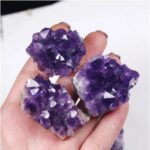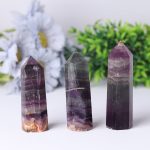Introduction
White onyx stone, a captivating natural wonder, exudes an ethereal beauty and versatility that has captivated architects, designers, and homeowners for centuries. Its distinctive white hue, translucent qualities, and unique textures make it an exceptional choice for a wide range of applications, from opulent interiors to striking exteriors.

Geological Formation and Properties
White onyx is a type of marble, formed from the recrystallization of limestone over millions of years under intense heat and pressure. It is composed primarily of calcite, with varying amounts of other minerals such as aragonite, dolomite, and quartz. The presence of these minerals contributes to its distinctive veining, textures, and translucency.
White onyx typically exhibits a Mohs hardness of 3-4, making it a relatively soft stone that requires careful handling during cutting and fabrication. However, its non-porous nature provides excellent resistance to stains and acids, making it ideal for both indoor and outdoor use.
Color and Texture Variations
The beauty of white onyx lies in its captivating color and texture variations. While its dominant hue is white, it can also display shades of cream, beige, or even pale pink. The subtle veining and swirls that traverse the stone create a visually stunning effect, making each piece unique.
Textures can range from finely crystalline to coarsely grained, adding depth and character to the material. Some white onyx varieties feature subtle banding, while others exhibit striking brecciated patterns, where fragments of the original limestone are embedded in the recrystallized matrix.
Applications in Interior Design
White onyx is a highly sought-after stone in interior design, bringing an air of sophistication and elegance to any space. Its translucency allows for creative lighting techniques, creating stunning effects when backlit.
-
Flooring: White onyx tiles add a touch of luxury and sophistication to any room. Their smooth, polished surface reflects light, making spaces appear larger and brighter.
-
Wall cladding: Onyx panels create visually captivating and durable wall coverings. They can be used to accentuate focal points, such as fireplaces, or to create entire feature walls.
-
Countertops: White onyx countertops are a statement piece for kitchens and bathrooms. They offer a hygienic, heat-resistant surface that is both beautiful and functional.
-
Lighting fixtures: Onyx is an excellent material for creating custom light fixtures, such as chandeliers, pendants, and sconces. Its translucency allows light to gently diffuse, creating a warm and inviting ambiance.
-
Art and decorative objects: Onyx sculptures, vases, and other decorative objects are highly prized for their exquisite beauty and unique textures.
Applications in Exterior Design
Beyond interior applications, white onyx is also gaining popularity in exterior design. Its durability and weather resistance make it suitable for a variety of outdoor uses.
-
Cladding: Onyx panels can be used to clad exterior walls, adding a touch of opulence and creating a unique architectural statement.
-
Pavers: White onyx pavers create stunning walkways, patios, and pool decks. Their slip-resistant surface ensures safety, while their beautiful appearance enhances outdoor living spaces.
-
Water features: Onyx fountains and water features add a sophisticated element to outdoor areas. The stone’s translucency allows water to cascade and shimmer, creating a captivating visual experience.
-
Landscaping: Onyx boulders and decorative stones can be incorporated into landscaping designs to add texture and interest.
Innovative Applications
Beyond traditional uses, architects and designers are exploring new and creative applications for white onyx.
-
Translucent furniture: Furniture pieces crafted from white onyx create a striking and ethereal effect. The stone’s translucency allows light to pass through, creating a unique and eye-catching aesthetic.
-
Architectural screens: Onyx screens can be used to divide spaces, create privacy, or add decorative elements to architectural structures. Their translucency provides natural light filtration while enhancing the visual appeal of the space.
-
Jewelry and accessories: White onyx is gaining popularity in jewelry and accessories, offering a unique and sophisticated alternative to traditional materials. Its delicate veining and translucency create stunning pendants, earrings, and bracelets.
Market Size and Growth
The global market for onyx stone, including white onyx, is expected to grow significantly in the coming years. Market Research Future estimates that the market will reach $1.3 billion by 2025, with a compound annual growth rate (CAGR) of 9%. The growing demand for premium materials in construction and interior design is a key driver of this growth.
Table 1: Physical Properties of White Onyx
| Property | Value |
|---|---|
| Mohs hardness | 3-4 |
| Density | 2.5-2.8 g/cm³ |
| Water absorption | <0.1% |
| Compressive strength | 60-100 MPa |
| Flexural strength | 10-20 MPa |
Table 2: Common Onyx Varieties
| Variety | Color | Features |
|---|---|---|
| White Onyx | White, cream, beige | Fine-grained, subtle veining |
| Cream Onyx | Cream, pale yellow | Coarsely grained, brecciated patterns |
| Mexican Onyx | Green, blue, orange | Vivid colors, unique banding patterns |
| Black Onyx | Black, dark gray | Deep, almost opaque color |
| Honey Onyx | Amber, golden yellow | Warm, translucent glow |
Table 3: Applications and Benefits of White Onyx
| Application | Benefits |
|---|---|
| Flooring | Beauty, durability, light reflection |
| Wall cladding | Visual impact, durability, easy maintenance |
| Countertops | Hygiene, heat resistance, aesthetics |
| Lighting fixtures | Captivating ambiance, warm lighting |
| Art and decorative objects | Unique textures, exquisite beauty |
| Exterior cladding | Opulence, weather resistance, architectural statement |
| Pavers | Durability, safety, aesthetic appeal |
| Water features | Sophistication, shimmering effects |
| Landscaping | Texture, interest, natural beauty |
Table 4: Tips and Tricks for Using White Onyx
| Tip | Explanation |
|---|---|
| Use backlighting | Enhance translucency and create dramatic effects |
| Seal regularly | Protect from stains and damage |
| Test for compatibility | Ensure compatibility with specific cleaning products |
| Handle carefully | Avoid chipping or scratching |
| Consider translucency | Plan lighting designs to maximize the stone’s translucent qualities |
FAQs
1. Is white onyx durable?
Yes, white onyx is a durable stone with good compressive and flexural strength. It is resistant to stains and acids, making it suitable for both indoor and outdoor use.
2. Can white onyx be used in wet areas?
Yes, white onyx is non-porous and has low water absorption, making it suitable for use in wet areas such as bathrooms and kitchens.
3. How often should I seal white onyx?
It is recommended to seal white onyx regularly, every 6-12 months, to protect it from stains and damage.
4. Can white onyx be scratched?
White onyx is a relatively soft stone and can be scratched if not handled carefully. Avoid using abrasive cleaners or sharp objects that could damage its surface.
5. How do I clean white onyx?
Use mild cleaning solutions and avoid harsh chemicals or abrasive cleaners. Always test cleaning products in an inconspicuous area first.
6. Is white onyx expensive?
The price of white onyx varies depending on factors such as the quality, size, and thickness of the stone. It is generally more expensive than other types of marble, but its unique beauty and durability justify its premium price.
Conclusion
White onyx stone is a captivating natural wonder that offers endless possibilities for architectural and interior design. Its translucency, durability, and unique textures make it a versatile and elegant material that can transform any space. From opulent interiors to striking exteriors, white onyx continues to inspire and enchant architects, designers, and homeowners alike.




























